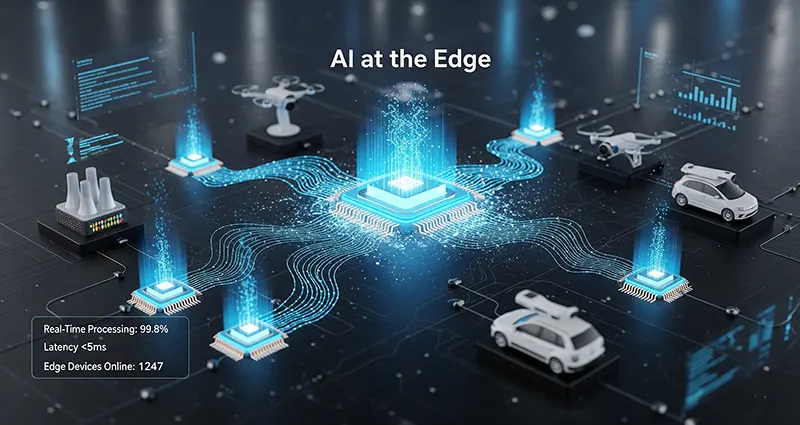As the demand for faster and more efficient data processing intensifies, businesses and technology developers are turning to AI at the edge to meet the challenges of real-time applications and low-latency environments. Edge computing combined with artificial intelligence enables data to be processed locally—close to the source—vastly reducing delays and improving responsiveness. This approach is revolutionizing how organizations handle critical workloads and deliver enhanced user experiences.
What is AI at the Edge?
AI at the edge refers to the deployment of artificial intelligence algorithms and models directly on edge devices such as sensors, gateways, smartphones, or IoT devices. Instead of sending raw data to cloud servers for processing, edge devices analyze and interpret data locally. This decentralization enables rapid decision-making and actions without the dependency on cloud connectivity.
Benefits of AI at the Edge for Real-Time and Low-Latency Applications
1. Reduced Latency
By processing data near the source, AI at the edge drastically cuts down the time needed for data transmission to a centralized cloud and back. This is essential for applications where milliseconds matter, such as autonomous vehicles, industrial automation, and augmented reality.
2. Bandwidth Efficiency
With AI processing data locally, only relevant insights or summarized information are sent to the cloud. This reduces network congestion and lowers bandwidth costs, especially important for environments with limited connectivity.
3. Enhanced Privacy and Security
Local data processing limits the exposure of sensitive information by minimizing data transmission over networks. This is crucial for sectors like healthcare and finance that handle confidential data.
4. Increased Reliability
Edge AI systems can operate uninterrupted even with unstable or unavailable internet connections, ensuring continuous functionality in remote or critical scenarios.
Key Real-Time and Low-Latency Use Cases
– Autonomous Vehicles: AI at the edge enables vehicles to process sensor data instantly, making immediate decisions to navigate safely and effectively.
– Industrial IoT: Edge AI facilitates real-time monitoring and predictive maintenance on factory floors, preventing downtime and optimizing production.
– Smart Cities: From traffic management to public safety, edge AI processes inputs from numerous sensors rapidly to enhance urban living.
– Healthcare Monitoring: Medical devices equipped with edge AI can analyze patient data on-site, enabling timely alerts and interventions.
– Augmented and Virtual Reality: To provide immersive and seamless experiences, edge AI supports real-time rendering and environment interaction without lag.
How to Implement AI at the Edge
1. Select Suitable Edge Hardware
Choose devices that balance processing power, energy efficiency, and size to support AI workloads without sacrificing performance.
2. Optimize AI Models
Compress and optimize AI models for deployment on constrained edge devices. Techniques like model pruning and quantization help reduce computational requirements.
3. Implement Edge-to-Cloud Integration
Design a hybrid architecture where immediate data processing occurs at the edge, while comprehensive analytics and storage happen in the cloud.
4. Prioritize Security Measures
Incorporate encryption, secure boot, and regular software updates to protect edge devices from cyber threats.
5. Continuous Monitoring and Updates
Deploy tools to monitor performance and periodically update AI models to adapt to new data and scenarios.
AI at the edge is transforming real-time data processing and low-latency applications by bringing intelligence closer to where data is generated. It addresses the need for speed, efficiency, and security, making it a critical technology in industries that rely on rapid, accurate decision-making.
As edge computing and AI technologies advance, organizations embracing AI at the edge will unlock new opportunities to innovate, enhance operational efficiency, and deliver superior experiences in an increasingly connected world.











